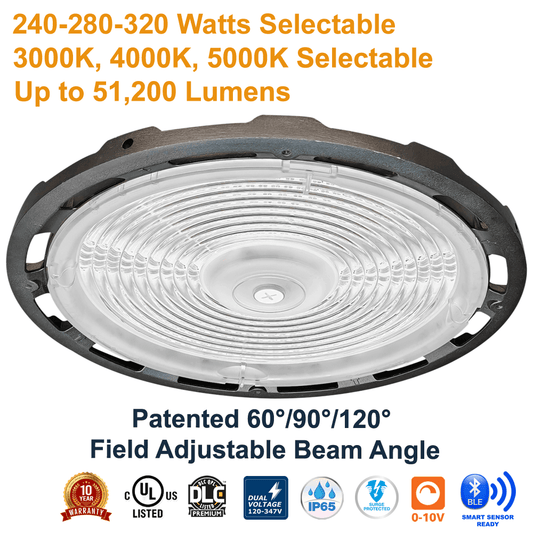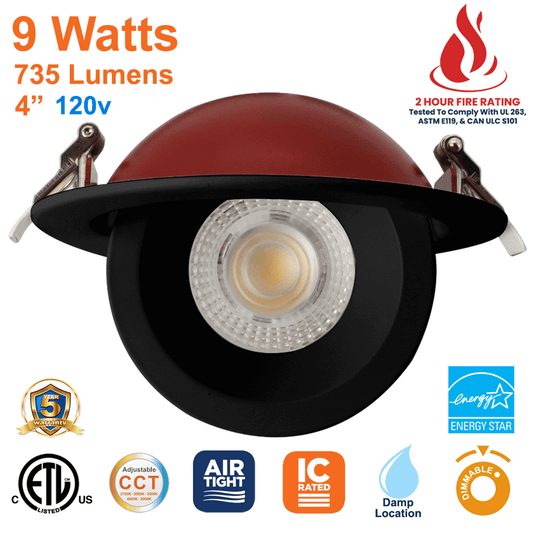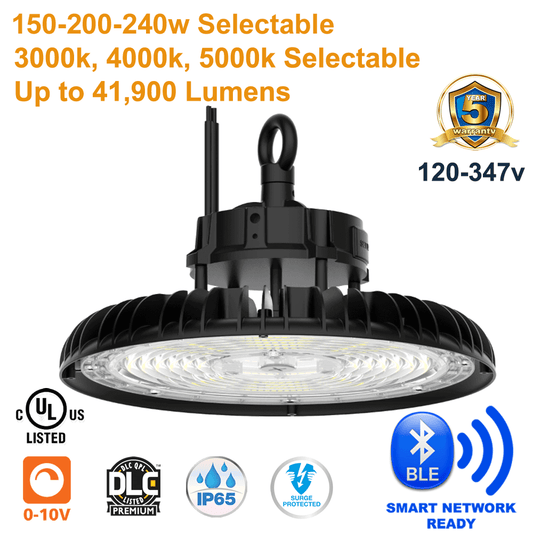Are you trying to figure out how to convert Lumens to Watts? You're not alone. Many people find it confusing to understand the relationship between Lumens and Watts, but it's essential to know how to convert them if you want to make informed lighting decisions.
This article outlines the basics of Lumens and Watts and how they relate to each other. Then we’ll show you how to convert Lumens to Watts.
Introduction: How To Convert Lumens To Watts
Lumens and Watts are both units of measurement that are used in the lighting industry, but they’re very different. Lumens are a measurement of the amount of light produced by a light source, such as an LED Fixture or LED Lamp. Watts are a measurement of the amount of energy (electricity) consumed by a light source.
With LED Lighting, the relationship between Lumens and Watts is not as straightforward as it was with traditional lighting. A high-wattage LED fixture doesn’t necessarily produce more Lumens than a fixture that consumes less wattage. Understanding how to convert Lumens to Watts is essential if you want to choose the right LED and maximize your energy savings.
Now, this may have the feel that this is going to be pretty heavy Ph.D. level math, but it’s not – it’s really quite easy once you find the missing ingredient to give you the calculation (scroll down to the bottom of the article if you can’t wait). Let’s dive in and outline Lumens and Watts and what they do.
What Are Lumens?
Lumens are a measure of the amount of light a light source produces. The higher the stated Lumens, the brighter the light output. For example, a 22,700 Lumen LED High Bay is brighter than a 15,100 Lumen LED High Bay. The unit of measurement for Lumens is abbreviated as lm.
How Are Lumens Measured?
Lumens are measured using a device called a photometer. A photometer measures the amount of light that is emitted by the light source and provides the number of Lumens that it produces.
Why Are Lumens Important?
Lumens provide an accurate measurement of the brightness of a light source. When choosing any lighting product, knowing the Lumen output helps guide your decision.
What Are Watts?
Watts are a measure of the amount of energy consumed by a light source. The higher the Wattage, the more energy the light source uses. The unit of measurement for Watts is abbreviated as W.
How Are Watts Measured?
Watts are measured using a Watt meter or power meter. The meter measures the amount of electricity being consumed by the Light Fixture and translates that into Watts.
Why Are Watts Important?
Watts provide an accurate measurement of the amount of energy a Light Fixture consumes. When choosing any lighting product, knowing the wattage helps you estimate the cost of operating the fixture. This helps you choose a product that not only delivers the light levels you’re looking for but is also energy efficient.
Lumens To Watts: Introducing The Missing Ingredient
So now it’s time to introduce the missing ingredient that helps us convert Lumens to Watts (and Watts to Lumens). It’s called Lumens per Watt (lm/W).
Lumens per Watt is a measure of how efficiently a light source converts energy into light and expresses how many Lumens are produced per Watt of electricity consumed. To convert Lumens to Watts, you need to know the Lumens per Watt of the LED Fixture or Lamp.
How To Convert Lumens To Watts?
Here’s our Lumens to Watts Calculator, use this formula and convert Lumens to Watts:
Watts = Lumens ÷ (Lumens per Watt)
or
W = lm ÷ (lm/W)

For example, if an LED High Bay produces 21,700 Lumens and has an lm/W rating of 145, the calculation would be: Watts = 21,700 ÷ 145 = 140 This means that the High Bay consumes 149.7 watts of energy to produce 21,700 lumens of light.
How To Convert Watts To Lumens?
If you know the Watts and the Lumens per Watt, but don’t know the Lumens, here’s our Watts to Lumens Calculator. The formula for converting Watts to Lumens is:
Lumens = Watts x (Lumens per Watt)
or
lm = W x (lm/W)

Quick Review Bullet Points:
- Lumens are a measurement of the amount of light a light source produces.
- Watts measure the amount of energy consumed by the light source.
- A higher wattage fixture does not necessarily produce more lumens than a fixture with lower wattage.
- Lumens per watt (lm/W) is a measure of a light source’s efficiency in converting energy into light.
FAQs:
Q: Why is it important to convert Lumens to Watts?
A: Converting Lumens to Watts helps in choosing an LED fixture that produces sufficient light while maximizing energy efficiency.
Q: What is the formula for converting Lumens to Watts?
A: If you know the Lumens and Lumens per Watt, the formula for converting Lumens to Watts is: Watts = Lumens ÷ (Lumens per Watt)
Q: What is the formula for converting Watts to Lumens?
A: If you don’t know the Lumens, but know the Watts and Lumens per Watt, the formula for converting Watts to Lumens is: Lumens = Watts x (Lumens per Watt)
Q: What is the difference between a Lumen and a Watt?
A: Both Lumens and Watts are units of measurement A Lumen is a measurement of the amount of light produced by a light source, while a Watt is a measurement of the amount of energy used by a light source.
Q: How do I know the lm/W rating of a light source?
A: The lm/W rating is usually listed on the packaging or product description of the light source. But if only the Lumens and Watts are listed, you can quickly calculate lm/W by dividing the Lumens by the Watts.
Q: Why do different types of LEDs have different lm/W ratings?
A: Different types of LEDs have different lm/W ratings because they use different LED Chip technologies. Not all LEDs are the same when it comes to lm/W, some LED Chips produce a higher lm/W than others.
Q: Can I use Lumens and Watts interchangeably?
A: No, Lumens and Watts measure different things, so they cannot be used interchangeably. Lumens measure the brightness of the light produced, while Watts measure the amount of energy the light source consumes.
Conclusion:
In conclusion, understanding how to convert lumens to watts is essential if you want to make informed decisions about lighting. Lumens measure the brightness (amount of light) produced by a light source. Watts measure the amount of energy (electricity) a light source will use. By knowing the relationship between these two units of measurement, you can choose the right light LED Fixture of LED Lamp for your needs, save energy, and reduce your carbon footprint.
When deciding on an LED Fixture, look for the Lumens per Watt (lm/W) rating, which indicates how efficiently the fixture converts energy into light. This helps you choose the most energy-efficient LED that delivers the amount of light you require.
Now that you know how to convert Lumens into Watts, you can confidently choose the LED you’re looking for that delivers bright and energy-efficient lighting.
If you’re looking for help in deciding the amount of light you need for your LED project, send us an email using our Contact Page or call us at 1-800-979-4223.























